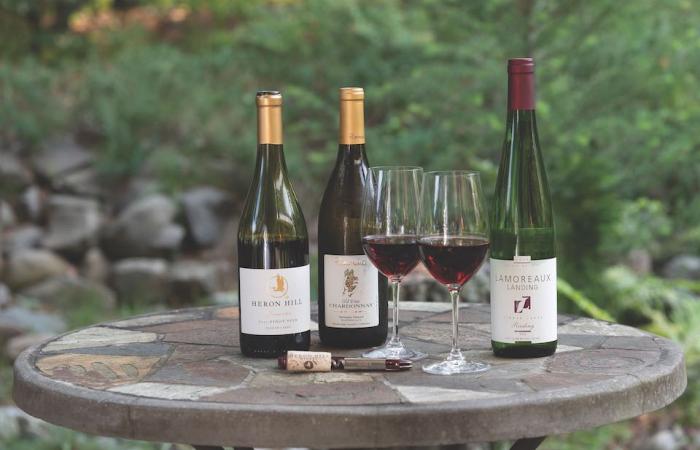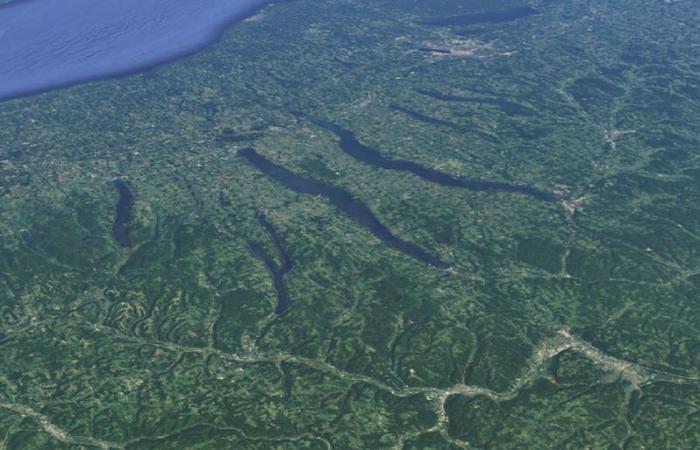With all the excitement over the great wines coming from the American west coast – California, Washington, Oregon – it is easy to overlook the third largest American producer on the other side of the continent, New York. Just over the Canada-US border, east of the Niagara Frontier and south of Lake Ontario, lie the spectacularly beautiful Finger Lakes, a bucolic upland that is now home to many intriguing and worthwhile wines, supplying some 3% of total American wine production.
As European settlers streamed to this brave new world, they brought with them their way of life from their former homes; this, of course, included grape vines for both fruit and wine. Those European vines did not thrive in the harsh climate of their new home, and most gave up trying, settling for producing Concord grape juice.
One name stands above all others in New York viticulture: Dr. Konstantin Frank. Born in the Ukraine, Frank studied viticulture at Odessa Polytechnic, and specialized in growing vines in cold climates in Soviet Georgia. Emigrating to the United States in 1951, he set about proving that good vinifera wine grapes could be grown there, if only he could find the right terroir. This quest led him to his first vineyard on the banks of Lake Keuka in the Finger Lakes region of upstate New York. Frank grafted his tender classic European grapevine shoots onto hardy North American native rootstocks, nurtured them on his carefully selected vineyard sites, and started a revolution. The rest, as we say, is history.
The third generation of Franks continues to produce fine wine at the original vineyard site, and now dozens of enthusiasts have followed their pioneering lead. Today, over 130 wineries are in production in the Finger Lakes AVA, and their success is inspiring winemaking to spread to other areas of New York – along the Hudson River valley and up the north end of Long Island.
What makes the Finger Lakes region so perfectly suited to viticulture is the unique set of microclimates formed by the moderating effects of the many long, narrow lakes lying close to and parallel to each other, creating milder winters, cooler summers, and long lingering late autumns in the gentle hills and valleys lying between the lakes. These same geographic and climatic features make this a delightful region for wine touring: small towns seemingly painted by Norman Rockwell, with quaint inns, delightful scenery, welcoming wineries, beautiful all year around, and rarely very crowded with other tourists (with one exception: race time at Watkins Glen). White grapes predominate here, particularly Riesling and Chardonnay; the wines are full and well balanced, with rich ripe fruit balanced by bracing acidity. The red grape with most success here is the temperamental and difficult Pinot Noir; these tend to be light-bodied and delicate – good wines for summer patios, but no match for Oregon.
Even though this is the closest American wine region to Ontario, few products are regularly available on our LCBO shelves –they get lost in the overwhelming production pouring out of California. They are worth keeping an eye out for; they can bring rare and under-appreciated variety to your table. Recently, Wagner Finger Lakes Winery Select Riesling has been available locally; it is made in a medium-sweet style, somewhat imitative of the classic German Rieslings. Wagner Vineyards also operates a fine restaurant at their winery, where I have enjoyed their Reserve Chardonnay, made in an assertive, Californian style. Heron Hill Finger Lakes Winery Reserve Pinot Noir has been available in Ontario as an example of a Finger Lakes red. Seek out these rarities and enjoy!
© Paul Inksetter 2022





